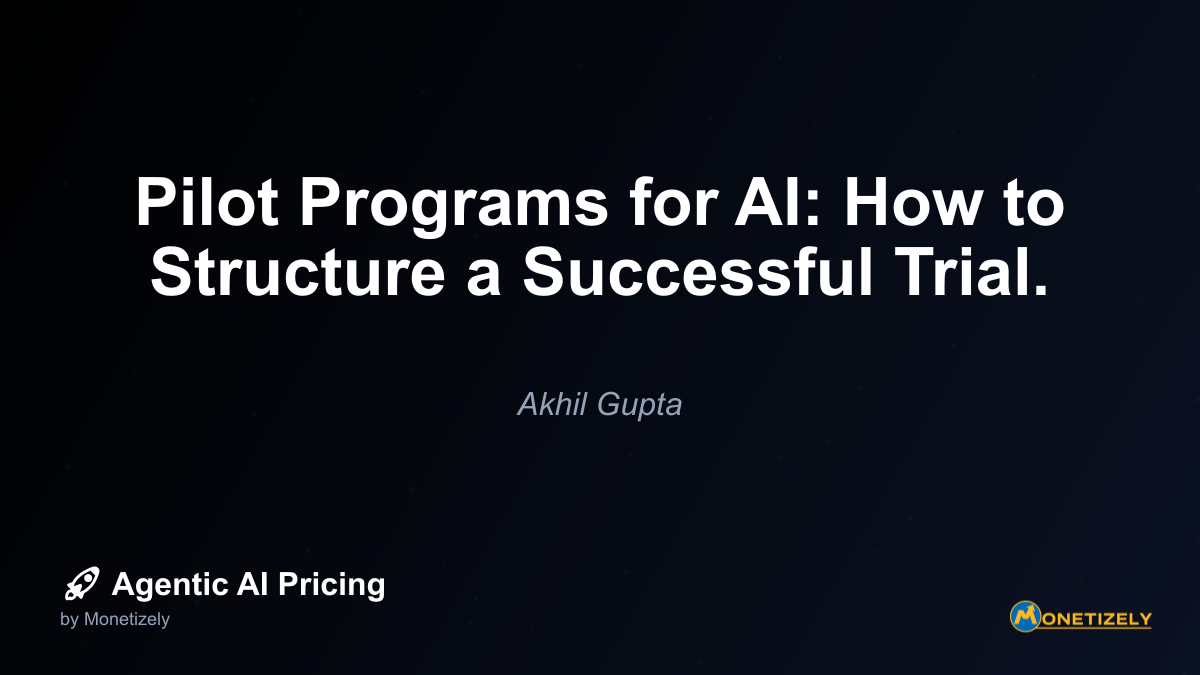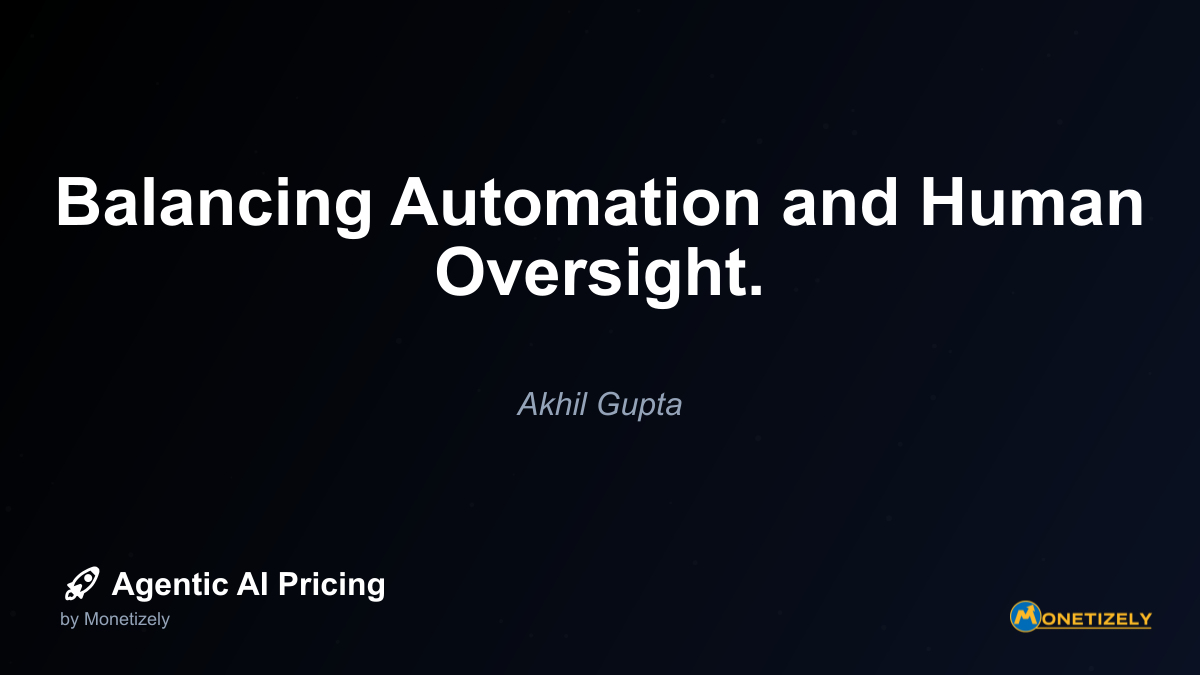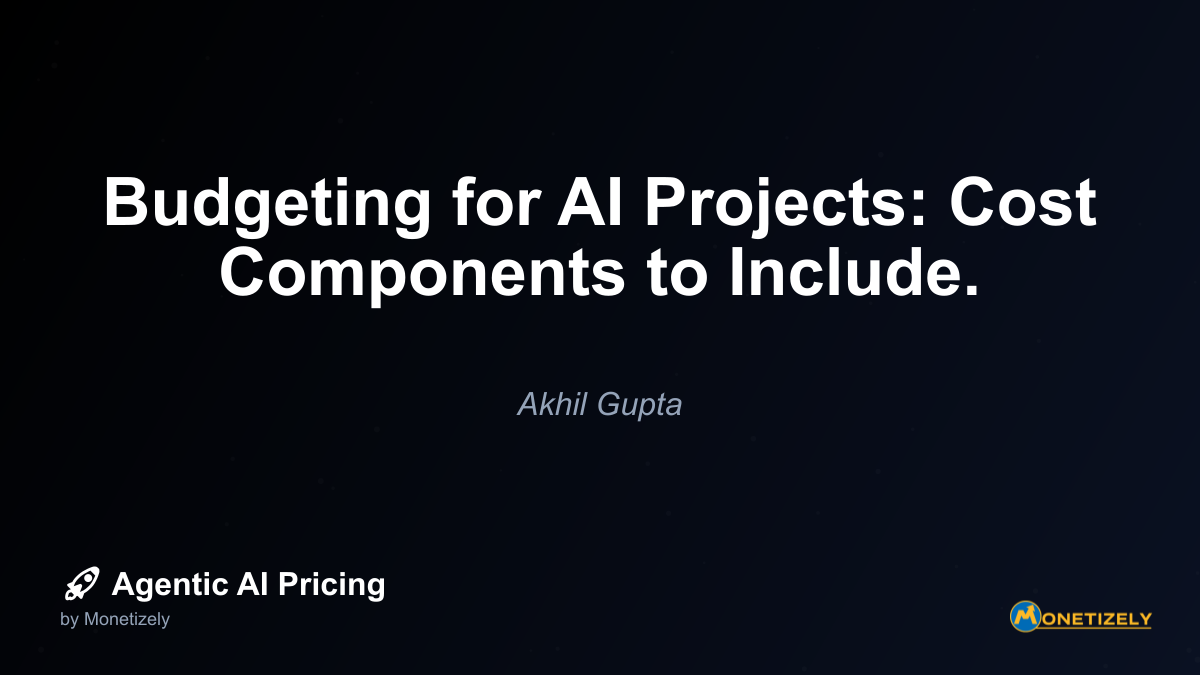· Akhil Gupta · Implementation Strategies · 11 min read
Pilot Programs for AI: How to Structure a Successful Trial.
AI and SaaS Pricing Masterclass
Learn the art of strategic pricing directly from industry experts. Our comprehensive course provides frameworks and methodologies for optimizing your pricing strategy in the evolving AI landscape. Earn a professional certification that can be imported directly to your LinkedIn profile.

Piloting AI initiatives requires a strategic approach that balances innovation with risk management. Successful organizations don’t rush headlong into full-scale AI deployments—they validate value through structured trials. This methodical approach not only mitigates potential risks but also builds organizational confidence and reveals unexpected benefits or challenges before significant resources are committed.
The Strategic Importance of AI Pilot Programs
AI pilot programs serve as controlled experiments that allow organizations to test assumptions, build expertise, and validate business cases before committing to enterprise-wide implementation. According to McKinsey’s 2025 workplace AI report, organizations that implement structured pilot programs before full deployment are 2.3 times more likely to achieve positive ROI from their AI initiatives.
The pilot phase represents a critical juncture in the AI implementation journey—it bridges conceptual planning with operational reality. Without proper structure, pilots can drift, fail to produce actionable insights, or create unrealistic expectations among stakeholders.
Key Components of a Successful AI Pilot Framework
1. Defining Clear Objectives and Scope
The foundation of any successful AI pilot is clarity of purpose. Organizations must articulate specific, measurable objectives that align with broader business goals.
Setting SMART Objectives:
- Specific: Target a clearly defined business problem (e.g., reducing customer service response time by automating routine inquiries)
- Measurable: Establish quantifiable metrics (e.g., 30% reduction in response time)
- Achievable: Ensure objectives are realistic within the pilot timeframe
- Relevant: Align with strategic business priorities
- Time-bound: Set a defined timeline for evaluation (typically 3-6 months)
Scoping Best Practices:
- Focus on high-impact, low-risk use cases that can demonstrate quick wins
- Limit the scope to a specific department, process, or customer segment
- Clearly define what’s in and out of scope to prevent “scope creep”
- Consider data availability and quality when defining scope
According to the Cloud Security Alliance (2025), successful AI pilots typically start in areas with minimal risk to core operations, supported by necessary data governance frameworks and leadership that fosters an innovation culture.
2. Establishing the Optimal Time Frame
The duration of an AI pilot must balance the need for meaningful data collection with the imperative to demonstrate value quickly. Industry research from 2023-2025 suggests optimal pilot durations ranging from 3 to 6 months, providing enough time to collect meaningful insights while preventing project fatigue or scope expansion.
Typical Timeline Breakdown:
| Phase | Duration | Key Activities |
|---|---|---|
| Preparation | 2-4 weeks | Data readiness, team assembly, infrastructure setup |
| Implementation | 6-8 weeks | Model deployment, integration, initial testing |
| Evaluation | 4-6 weeks | Data collection, performance assessment |
| Analysis & Recommendations | 2-4 weeks | Insights gathering, scaling strategy development |
Timeline Considerations by AI Application Type:
- Short-term pilots (4-8 weeks): Ideal for low-risk, high-impact applications like AI chatbots for customer queries, capable of achieving quick measurable benefits such as 40% query time reduction
- Medium-term pilots (3-6 months): Suitable for more complex use cases involving multiple stakeholders and requiring deeper integration
- Long-term pilots (6-12 months+): Recommended for large-scale transformations requiring continuous evaluation and extensive stakeholder collaboration
Organizations should resist the temptation to rush pilots, as premature scaling can lead to implementation failures. Conversely, excessively long pilots risk losing momentum and stakeholder interest.
3. Defining Comprehensive Success Criteria
Effective AI pilots require multidimensional success criteria that encompass both quantitative metrics and qualitative assessments. According to recent research, organizations that establish clear, measurable success criteria are 76% more likely to achieve positive outcomes from their AI initiatives.
Quantitative Success Metrics:
- Financial Impact: Cost reduction, revenue increase, ROI
- Operational Efficiency: Process time reduction, throughput improvement
- Quality Improvements: Error rate reduction, accuracy enhancement
- Resource Utilization: Staff time reallocation, infrastructure optimization
- Customer Impact: Satisfaction scores, retention rates, engagement metrics
Qualitative Success Factors:
- User adoption and satisfaction
- Ease of integration with existing workflows
- Organizational learning and capability building
- Ethical considerations and alignment with values
- Potential for scaling and broader application
Success Criteria Framework:
- Align with business outcomes: Define success criteria that directly measure impact on strategic goals rather than technical milestones alone
- Implementation readiness: Evaluate organizational preparedness, from data quality to staff skills and change management
- Clear ROI metrics: Set measurable financial and operational KPIs for pilots (e.g., cost savings, revenue growth) plus adoption and satisfaction indicators
- Iterative learning focus: Include the ability to adapt and improve AI solutions based on pilot feedback
McKinsey notes that despite the availability of holistic AI benchmarks (e.g., Stanford’s HELM, MLCommons’ AILuminate), only 39% of C-suite leaders actively benchmark AI operational and performance metrics, and even fewer focus on ethical metrics. Leaders should balance operational metrics with compliance and fairness concerns for sustainable AI adoption.
4. Structuring Effective Feedback Loops
Continuous feedback mechanisms are essential for pilot refinement and ultimate success. Well-designed feedback loops enable organizations to identify issues early, make necessary adjustments, and build stakeholder confidence throughout the pilot process.
Key Components of Effective Feedback Loops:
- Regular Check-ins: Schedule structured reviews at predetermined milestones
- Multi-channel Feedback Collection: Gather insights through surveys, interviews, system logs, and performance data
- Cross-functional Input: Include perspectives from technical teams, end-users, and business stakeholders
- Transparent Communication: Share findings openly to build trust and manage expectations
- Action-oriented Process: Establish mechanisms to quickly implement necessary changes based on feedback
Expert Recommendations for Structuring Feedback Loops:
- Continuous data monitoring: Implement automated tracking of KPIs with dashboards to allow rapid insight into AI pilot performance
- Frequent stakeholder engagement: Regularly involve decision-makers, end users, and technical teams to interpret data and adjust pilots
- Role-specific feedback channels: Create tailored mechanisms for different user groups to report usability and effectiveness
- Learning-oriented iteration: Use feedback to refine workflows, retrain models, and update processes rapidly rather than conducting one-off pilot assessments
Feedback loops should be designed not just to validate success but to identify opportunities for improvement and innovation. The most valuable insights often emerge from unexpected challenges or user behaviors that weren’t anticipated in the initial planning phase.
Building the Right Team for AI Pilots
The success of AI pilots heavily depends on assembling the right mix of skills, perspectives, and authority. Recent research indicates that cross-functional teams with clear roles and responsibilities are 65% more likely to deliver successful AI pilots.
Core Team Composition:
- Executive Sponsor: Senior leader who provides strategic direction, removes organizational barriers, and secures necessary resources
- Project Lead: Manages day-to-day pilot activities, coordinates team efforts, and ensures alignment with objectives
- Data Scientists/AI Engineers: Technical experts who develop, deploy, and refine AI models
- Domain Experts: Subject matter specialists who provide industry and process knowledge
- End Users: Representatives from the teams who will ultimately use the AI solution
- IT/Infrastructure Support: Ensures technical compatibility and integration with existing systems
- Change Management Specialist: Facilitates organizational adoption and addresses resistance
Roles and Responsibilities Matrix:
| Role | Key Responsibilities | Success Factors |
|---|---|---|
| Executive Sponsor | Resource allocation, strategic alignment, barrier removal | Authority, vision, influence |
| Project Lead | Day-to-day management, stakeholder coordination | Organization, communication, problem-solving |
| Data Scientists | Model development, technical implementation | Technical expertise, adaptability |
| Domain Experts | Process knowledge, requirements definition | Industry experience, practical insights |
| End Users | Testing, feedback, adoption | Openness to change, practical perspective |
| IT Support | Integration, security, infrastructure | Technical knowledge, collaboration |
| Change Manager | Adoption strategy, resistance management | Empathy, communication, influence |
Team Collaboration Best Practices:
- Schedule regular cross-functional meetings to ensure alignment
- Create shared documentation repositories for knowledge sharing
- Establish clear decision-making protocols and escalation paths
- Promote psychological safety to encourage honest feedback
- Celebrate small wins to maintain momentum and engagement
According to recent studies, hybrid teams combining domain experts, data scientists, AI engineers, and business stakeholders foster better AI adoption and ROI. Including AI champions or superusers who can bridge technology and end-user needs facilitates smoother workflows and feedback loops.
Data Preparation for AI Pilots
Data quality and accessibility are foundational elements of AI pilot success. Recent research indicates that data-related challenges account for approximately 60% of AI project failures.
Data Readiness Assessment:
- Availability: Identify required data sources and confirm access permissions
- Quality: Assess completeness, accuracy, consistency, and timeliness
- Format: Evaluate compatibility with AI tools and need for transformation
- Volume: Ensure sufficient data for meaningful model training and validation
- Compliance: Verify alignment with privacy regulations and internal policies
Data Preparation Checklist:
- Inventory existing data assets relevant to the pilot scope
- Identify data gaps and develop acquisition strategies
- Implement data cleaning and normalization processes
- Establish data governance protocols for the pilot
- Create documentation of data sources, transformations, and limitations
- Set up secure data storage and access controls
- Develop monitoring for data quality throughout the pilot
Common Data Challenges and Solutions:
| Challenge | Solution |
|---|---|
| Insufficient data volume | Augment with synthetic data or adjust scope |
| Data quality issues | Implement cleaning processes and quality checks |
| Siloed data sources | Create temporary integration solutions for the pilot |
| Privacy concerns | Anonymize or pseudonymize sensitive information |
| Inconsistent formats | Develop standardization protocols and transformations |
In fintech AI pilots (2025), organizations focused on testing credit scoring models started by gathering clean and relevant transaction and application data, assembling specialized teams, and using simple, transparent AI tools to maximize trust and usability.
Stakeholder Management and Communication
Effective stakeholder engagement is critical to AI pilot success. Research from 2023-2025 shows that clear communication strategies tailored to different stakeholder groups significantly improve pilot outcomes and organizational adoption.
Stakeholder Mapping:
- Identify key stakeholders: Map all groups affected by or influencing the pilot
- Assess interests and concerns: Understand what matters to each stakeholder group
- Determine communication needs: Establish frequency, format, and content requirements
- Develop engagement strategies: Create tailored approaches for each stakeholder group
Communication Strategies by Stakeholder Group:
Executives:
- Focus on strategic alignment, ROI projections, and risk management
- Provide concise dashboards highlighting KPIs and business impacts
- Schedule regular briefings with actionable insights and recommendations
- Emphasize AI’s role in augmenting—not replacing—employees
End Users:
- Involve them early in pilot planning to address concerns upfront
- Offer targeted training sessions and hands-on workshops
- Clarify how AI will affect their daily work and potential benefits
- Create channels for continuous feedback and improvement suggestions
IT Teams:
- Engage early to audit data quality and infrastructure readiness
- Maintain frequent technical updates on deployment and integration
- Collaborate on security, compliance, and technical risk assessments
- Develop joint troubleshooting protocols for technical issues
Communication Cadence:
| Stakeholder Group | Communication Frequency | Primary Format | Key Content |
|---|---|---|---|
| Executive Sponsors | Bi-weekly | Executive summary | Strategic impacts, KPIs, resource needs |
| Project Team | Weekly | Detailed status report | Progress, challenges, next steps |
| End Users | Ongoing | Training, demos, Q&A | Functionality, benefits, feedback channels |
| IT/Security | As needed | Technical documentation | Integration, security, compliance |
| Broader Organization | Monthly | Newsletter, updates | General awareness, success stories |
According to recent research, organizations that involve staff in pilot planning and address concerns upfront experience significantly less resistance to change (experienced by 28% of SMBs). Offering targeted AI training sessions and hands-on workshops builds confidence and acceptance among users.
Measuring ROI and Value of AI Pilots
Demonstrating the value of AI pilots requires robust measurement frameworks that capture both immediate impacts and long-term potential. Recent research indicates that organizations with clear ROI methodologies are 3.2 times more likely to secure funding for scaling successful pilots.
ROI Measurement Methodologies:
- Define clear goals and KPIs: Align AI projects with strategic objectives such as faster innovation, cost reduction, or better customer satisfaction
- Establish a baseline: Collect pre-pilot data on current performance metrics for rigorous before-and-after comparison
- Track hard ROI KPIs: Quantify labor cost reductions, operational efficiency gains, revenue increases
- Track soft ROI KPIs: Measure employee satisfaction, decision-making quality, customer satisfaction improvements
- Account for productivity leak: Recognize that time saved may not always translate into immediate additional output but may improve quality or enable innovation
ROI Calculation Framework:
ROI = (Total Benefits - Total Costs) / Total Costs × 100%Benefits Components:
- Direct cost savings (labor, materials, etc.)
- Revenue increases (new sales, upsells, etc.)
- Time savings converted to monetary value
- Error reduction and quality improvements
- Customer retention and satisfaction impacts
Cost Components:
- Technology implementation and licensing
- Team time for pilot implementation
- Training and change management
- Data preparation and infrastructure
- Ongoing maintenance and support
Value Beyond ROI:
While financial ROI is important, successful AI pilots often deliver additional value that should be captured:
- Organizational learning and capability building
- Improved decision-making quality and speed
- Enhanced customer and employee experience
- Risk reduction and compliance improvements
- Innovation acceleration and competitive positioning
According to IBM’s 2025 AI ROI insights, organizations that measure both hard and soft benefits from AI pilots are better positioned to secure executive buy-in for scaling successful initiatives. The most successful organizations establish clear baselines before pilots begin and track multiple metrics throughout implementation.
Risk Management in AI Pilots
Effective risk management is essential for AI pilot success. Recent research indicates that proactive risk identification and mitigation strategies significantly increase the likelihood of positive pilot outcomes.
Key Risk Categories:
- Technical Risks: Model performance, data quality, integration challenges
- Operational Risks: Process disruptions, resource constraints, timeline delays
- Organizational Risks: Resistance to change, skill gaps, stakeholder alignment
- Ethical Risks: Bias, fairness, transparency, privacy concerns
- Compliance Risks: Regulatory requirements, industry standards, internal policies
Risk Management Framework:
- Risk Identification: Conduct comprehensive assessment of potential risks across all categories
- Risk Assessment: Evaluate likelihood and potential impact of each identified risk
- Risk Mitigation: Develop specific strategies to address high-priority risks
- Risk Monitoring: Establish processes to track risk indicators throughout the pilot
- Contingency Planning: Create response plans for potential risk scenarios
Risk Register Template:
| Risk Category | Risk Description | Likelihood | Impact | Mitigation Strategy | Owner | Status |
|---|---|---|---|---|---|---|
| Technical | Data quality issues | Medium | High | Implement data validation processes | Data Team | Active |
| Operational | Resource constraints | High | Medium | Secure dedicated resources, prioritize activities | Project Lead | Mitigated |
| Organizational | User resistance | Medium | High | Early engagement, training, clear communication | Change Manager | Monitoring |
| Ethical | Bias in model outputs | Medium | High | Diverse training data, regular bias audits | AI Team | Active |
| Compliance | Privacy concerns | Low | High | Data anonymization, legal review | Legal/IT | Resolved |
Risk Mitigation Best Practices:
- Conduct readiness assessments to identify gaps in data, skills, and processes before pilot launch
- Plan for technical risks like model drift and ethical concerns by incorporating continuous monitoring
- Manage change resistance through clear communication of benefits and early user involvement
- Treat pilots as learning opportunities rather than all-or-nothing bets
According to recent studies, organizations that implement comprehensive risk management frameworks are significantly more likely to achieve successful AI pilot outcomes and smoother transitions to full-scale deployment.
Documentation Best Practices for AI Pilots
Thorough documentation is essential for AI pilot success, knowledge transfer, and scaling potential. Recent research indicates that comprehensive documentation significantly improves the likelihood of successful pilot-to-production transitions.
Essential Documentation Components:
- Pilot Charter: Objectives, scope, timeline, team roles, success criteria
- Technical Documentation: Model architecture, data sources, preprocessing steps, integration points
- Process Documentation: Workflows, decision points, user interactions, exception handling
- Testing Documentation: Test cases, validation methods, performance benchmarks
- Results and Analysis: Performance metrics, insights, challenges, recommendations
Documentation Best Practices:
- Maintain detailed records of pilot objectives, scope, data sources, and preprocessing steps
- Document training materials, stakeholder communications, and feedback received
- Log performance metrics
Co-Founder & COO
Akhil is an Engineering leader with over 16+ years of experience in building, managing and scaling web-scale, high throughput enterprise applications and teams. He has worked with and led technology teams at FabAlley, BuildSupply and Healthians. He is a graduate from Delhi College of Engineering and UC Berkeley certified CTO.
Pricing Strategy Audit
Let our experts analyze your current pricing strategy and identify opportunities for improvement. Our data-driven assessment will help you unlock untapped revenue potential and optimize your AI pricing approach.




